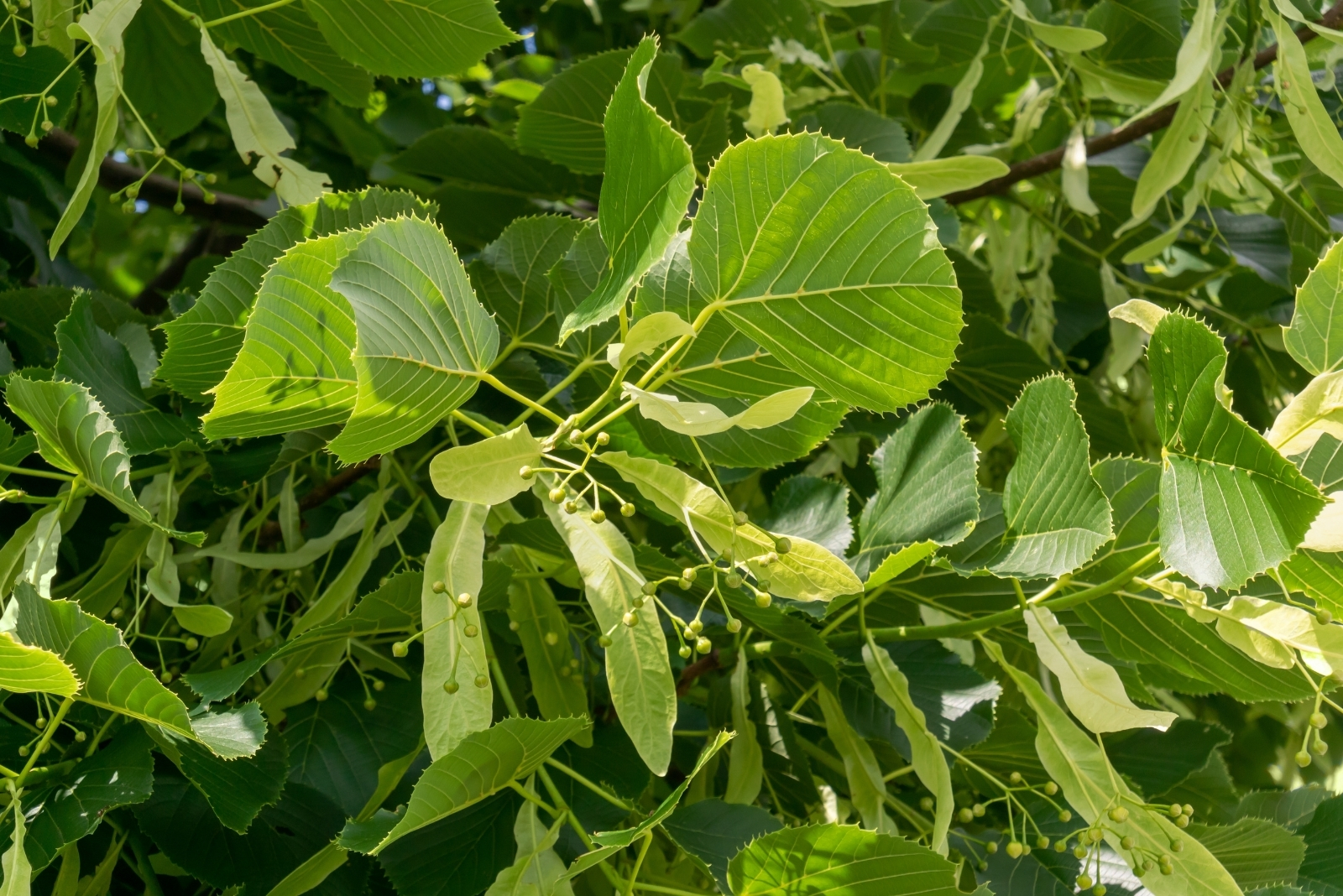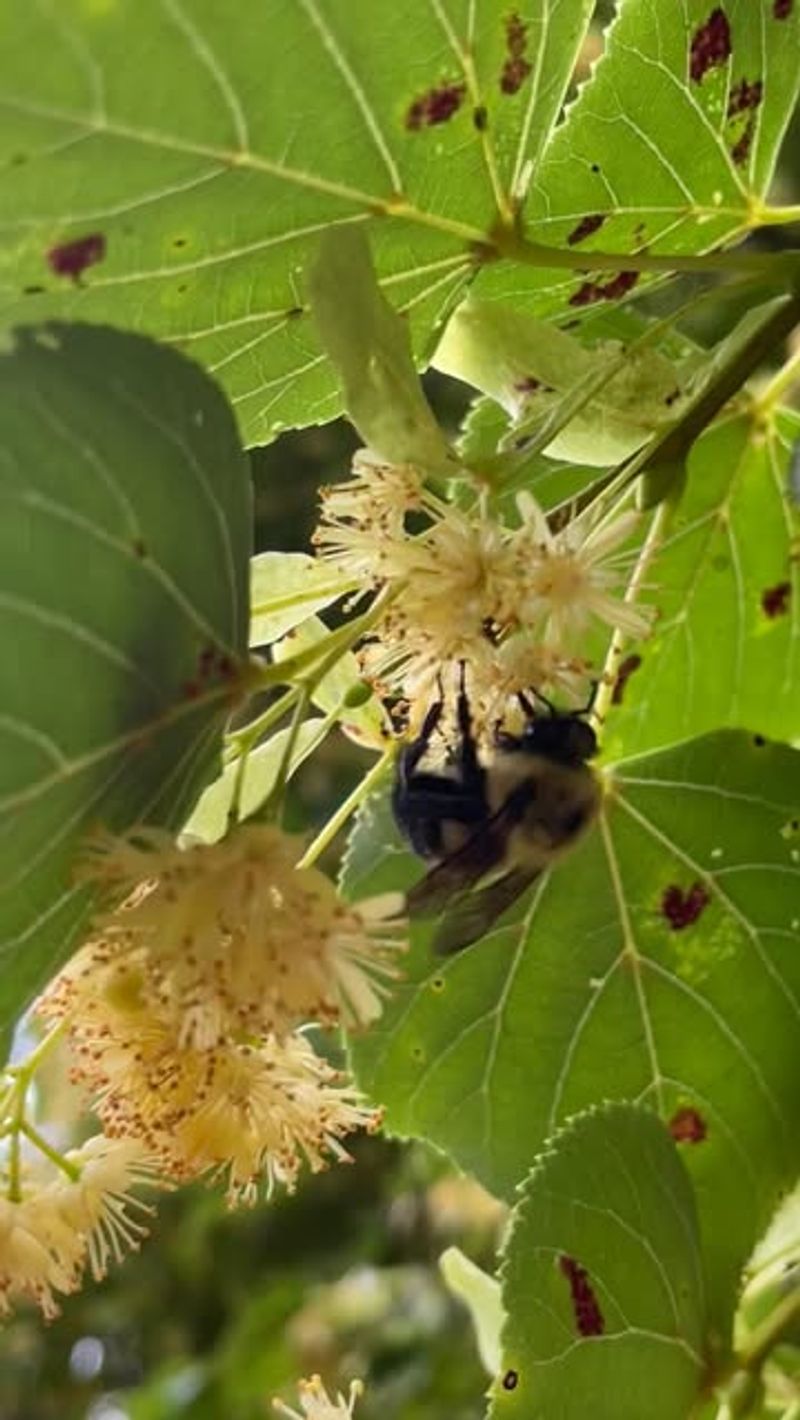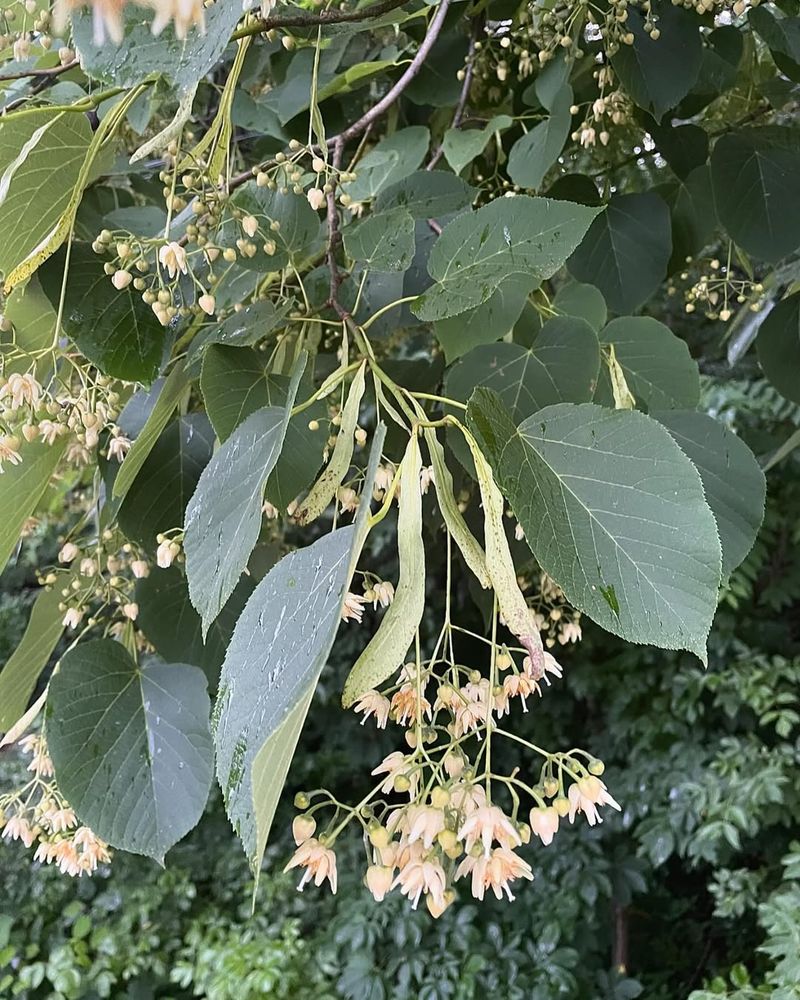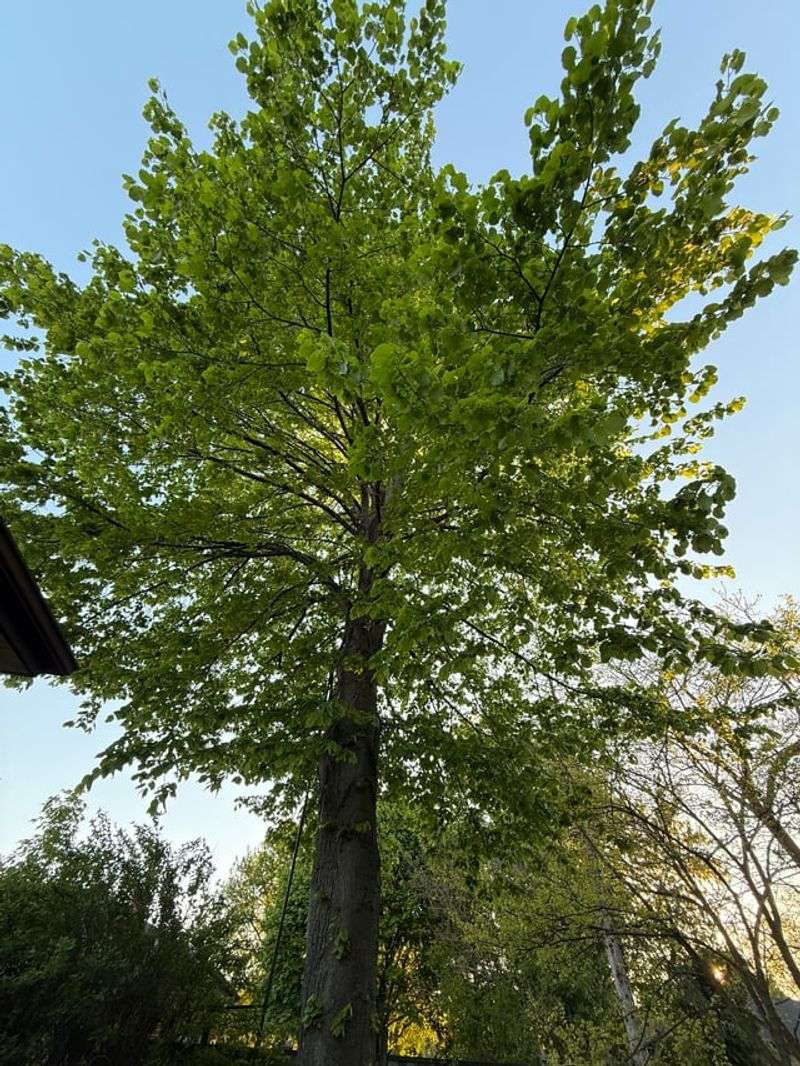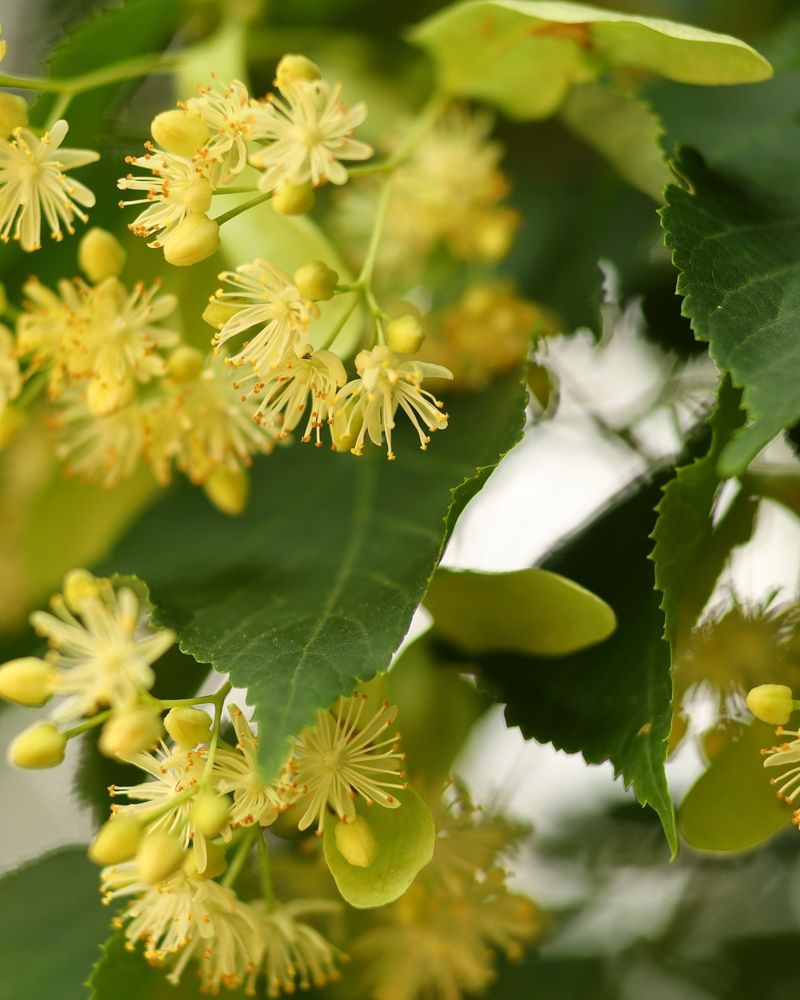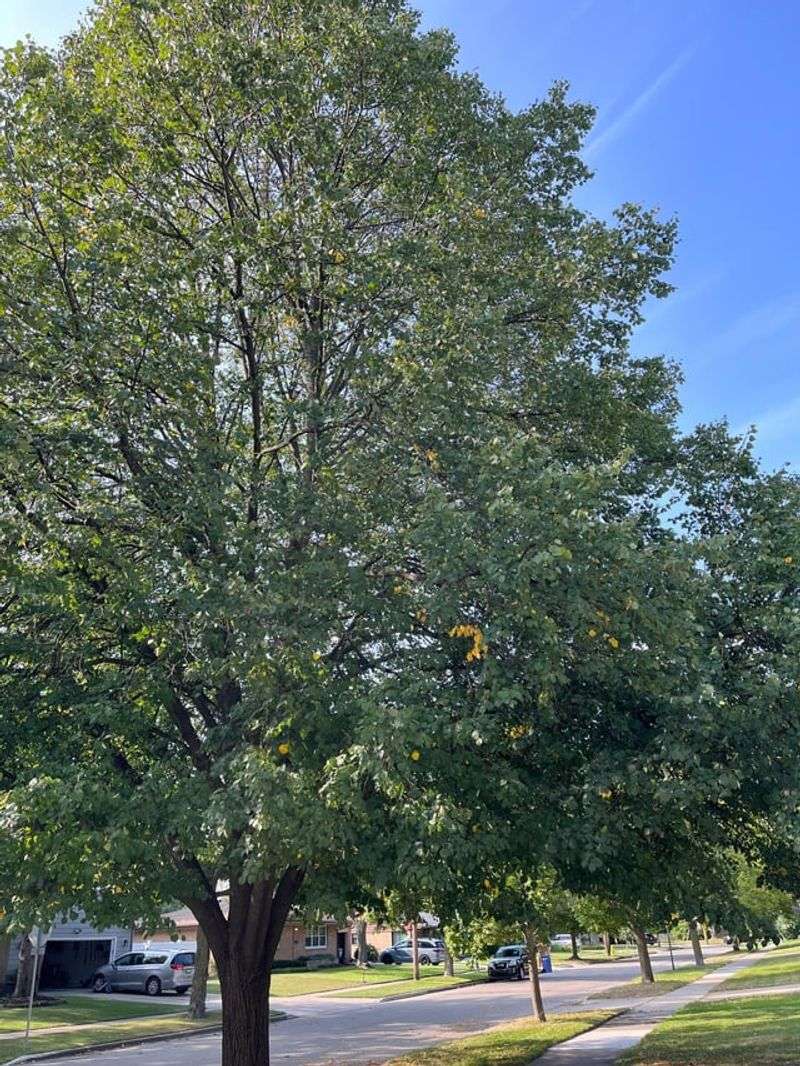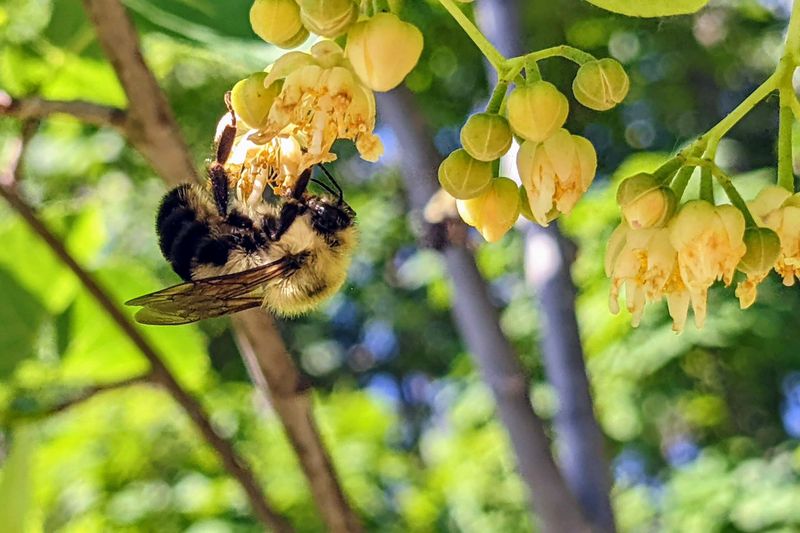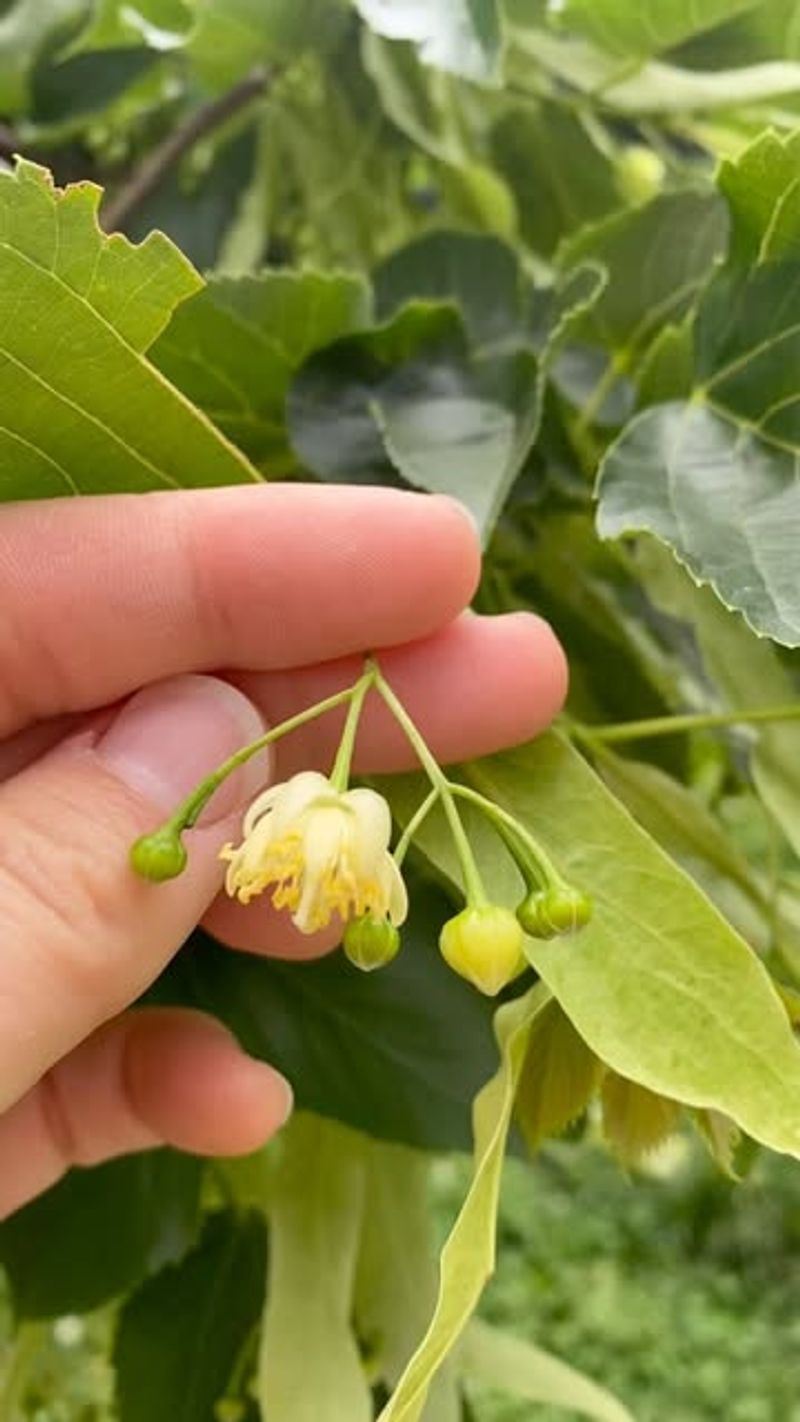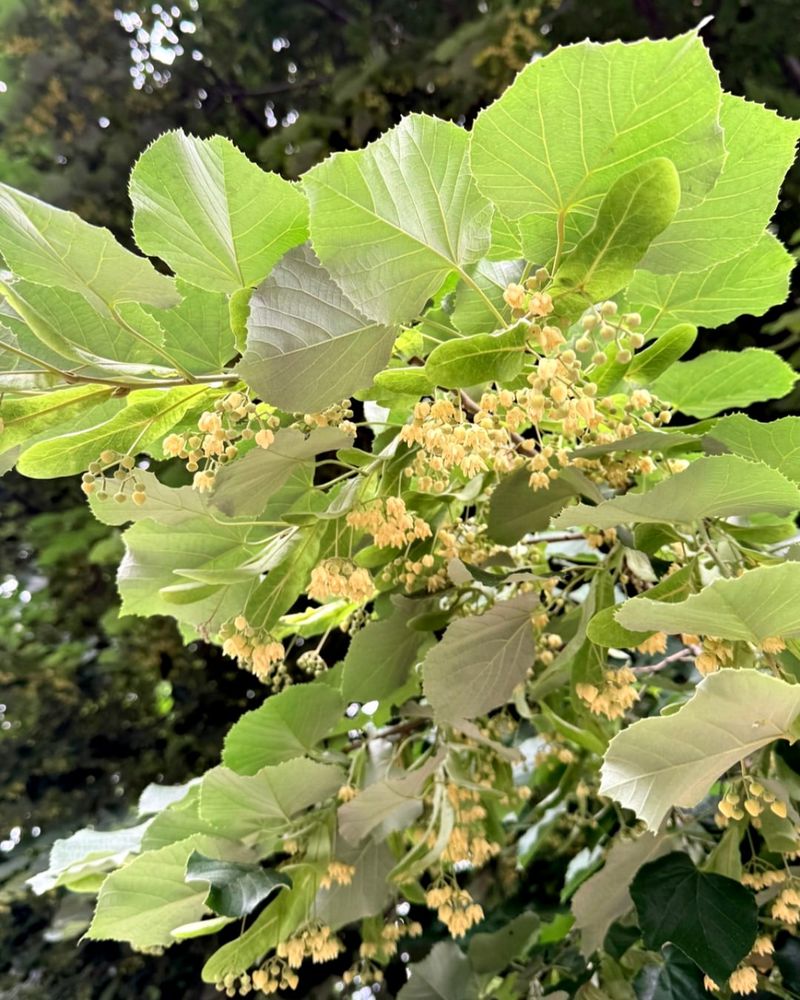If you stroll through Minnesota in the fall, you might notice something magical happening in the trees. One tree, in particular, transforms into a buzzing paradise for pollinators, drawing bees, butterflies, and more.
That tree is the basswood, a hidden gem that turns any yard into a lively pollinator hotspot. It’s amazing to see how nature puts on its own colorful, buzzing show every autumn.
1. Late Blooming Schedule Provides Critical Food
Unlike most flowering trees that bloom in spring, basswood waits until late June or early July to show its creamy yellow blossoms. This timing becomes a lifeline for pollinators across Minnesota.
By autumn, many other nectar sources have dried up, making basswood flowers incredibly valuable. Bees especially depend on this late-season buffet to build up honey stores before winter arrives.
The extended blooming period means pollinators have reliable food when they need it most, supporting entire colonies through challenging times.
2. Fragrant Flowers Act Like Pollinator Magnets
Walk past a blooming basswood in Minnesota and you’ll notice something immediately—the sweet, honey-like scent floating through the air. That powerful fragrance isn’t just pleasant for humans.
Pollinators can detect these aromatic signals from remarkable distances, drawing them straight to the tree. The smell acts like a restaurant sign advertising fresh meals.
Honeybees, bumblebees, and various butterfly species follow this scent trail eagerly, creating busy aerial highways leading directly to basswood branches throughout the season.
3. Abundant Nectar Production Feeds Hundreds
Each basswood flower produces generous amounts of high-quality nectar that pollinators crave. A single mature tree can host thousands of individual blossoms, creating an enormous food supply.
Beekeepers in Minnesota actually position hives near basswood groves because the nectar makes exceptionally delicious, light-colored honey. One tree can support hundreds of bees simultaneously without running out.
This abundance means competition stays low, allowing different pollinator species to share the resource peacefully while getting their fill.
4. Unique Flower Structure Welcomes All Sizes
Basswood flowers feature an open, accessible design that accommodates pollinators of all shapes and sizes. Tiny native bees can navigate the blooms just as easily as chunky bumblebees.
The flower clusters hang downward on special leafy bracts, making them easy landing platforms. This thoughtful architecture means nobody gets excluded from the feast happening in Minnesota’s forests.
From delicate moths to robust beetles, the basswood’s welcoming structure ensures maximum participation, boosting pollinator diversity significantly throughout the autumn months.
5. Extended Bloom Time Spans Several Weeks
Most trees bloom for just a week or two before petals fade away. Basswood breaks this pattern by flowering for three to four weeks straight across Minnesota.
Individual flowers open in waves rather than all at once, creating a sustained buffet. Early pollinators get fed, and latecomers still find fresh blossoms.
This extended timeline proves crucial for species with different life cycles. Butterflies emerging late in the season still discover abundant food sources, while early autumn bees continue gathering supplies.
6. Pollen Quality Supports Healthy Bee Colonies
Beyond nectar, basswood offers protein-rich pollen that’s essential for bee health. Young bees need this pollen to develop properly, making basswood trees nurseries as much as restaurants.
In Minnesota, beekeepers notice stronger colonies when basswood blooms nearby. The pollen contains amino acids and nutrients that boost bee immune systems before winter.
Bumblebee queens preparing to hibernate rely heavily on this high-quality pollen source, storing energy that determines whether their species survives until spring returns.
7. Tall Canopy Height Offers Protected Feeding Zones
Basswood trees grow impressively tall—sometimes reaching 80 feet—which creates elevated feeding stations throughout Minnesota’s woodlands. Up in the canopy, pollinators find safer environments away from ground predators.
Birds and other hunters have harder times reaching insects dining high among the branches. This vertical refuge allows pollinators to feed peacefully, spending more time gathering resources.
The height also catches better airflow, spreading that signature basswood fragrance farther across the landscape and attracting even more visitors to the autumn feast.
8. Clustered Growth Patterns Create Pollinator Highways
Basswood trees often grow in clusters rather than alone, forming natural groves across Minnesota’s landscape. When multiple trees bloom simultaneously, they create concentrated feeding zones that pollinators remember and revisit.
Bees communicate these productive locations to their hive mates through intricate dances, bringing more workers to the area. Butterflies and moths also learn these routes, establishing flight patterns.
These pollinator highways become autumn traditions, with insects returning year after year to the same reliable basswood neighborhoods for sustenance.

